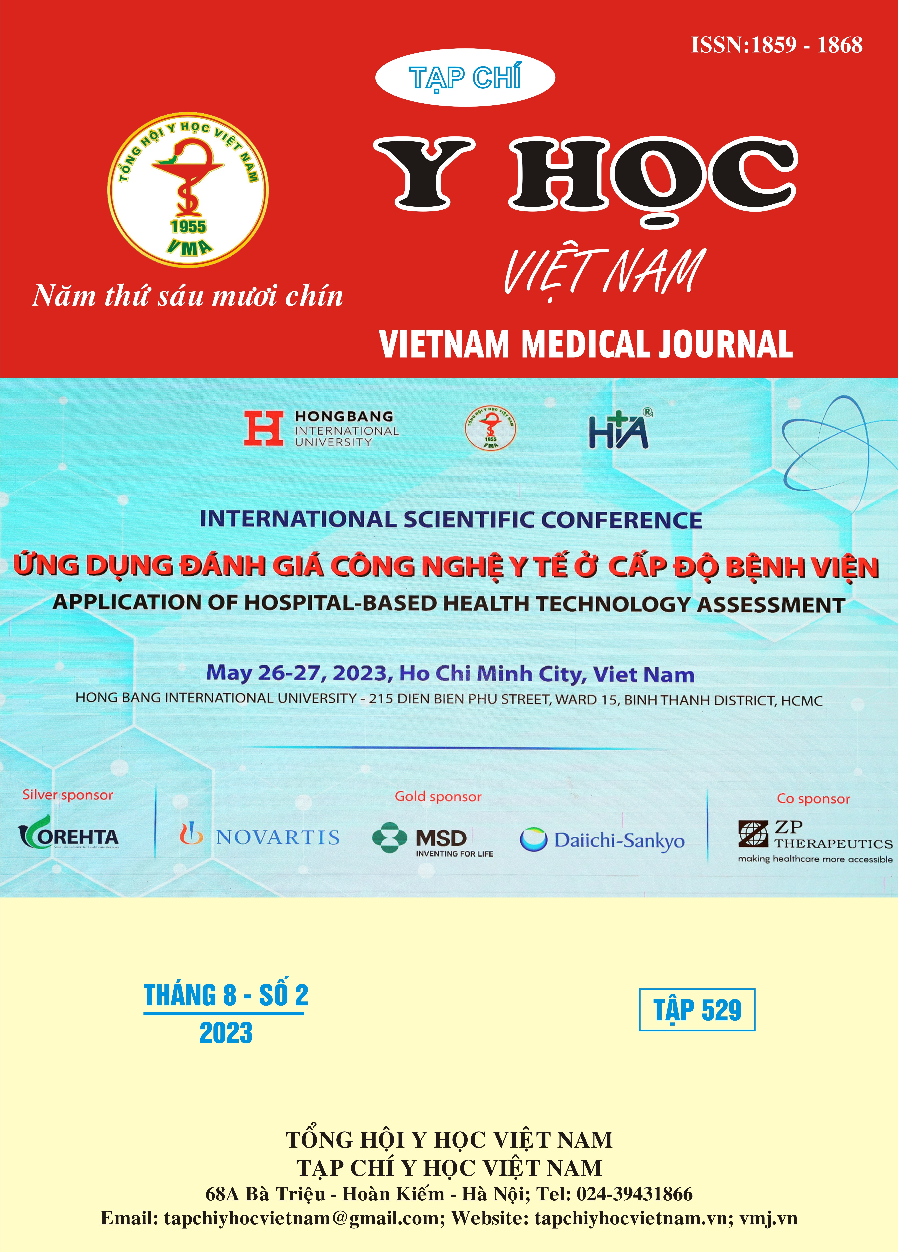EFFECTIVENESS OF MAGO IN TREATMENT OF TEMPOROMANDIBULAR JOINT DYSFUCTION
Main Article Content
Abstract
Objectives: To describe the clinical and radiographic changes in the treatment of TMJ dysfunction with a mago. Meterial and methods: The study was conducted on 30 patients diagnosed with TMJ disorder who came to Hanoi for examination and treatment at the Hanoi Hospital of Odonto- Stomatology, using the results of examination and Conebeam City (CBCT). Results: Clinical change: post-treatment pain relief according to the VAS scale of 2.9 ± 2.9, decrease in click sounds from 86.7% to 43.3%, decrease in crunching sound 10% to 6.3%, open mouth wider 8.5±3.9mm. CBCT: in 18 patients
with condylar displacement after treatment, 94.4 % of the condyle was returned to the correct center. In 4 patients with osteoarthritis, after treatment, 75% heal, and 25% haVe no obVious changes on film. This change is statistically significant with p<0.005.
Article Details
Keywords
TMJ, CBCT
References
temporomandibular joint disorders. Cochrane Database Syst ReV.p95.
2. Huang GJ, LeResche L, CritchlowCW, Martin MD, DrangsholtMT (2008). Risk factors for diagnostic subgroups of painful temporomandibular disorders (TMD). J Dent Res.81:284-8.
3. James Fricton (2007). Myogenous Temporomandibular Disorders: Diagnostic and Management Considerations. Dent Clin N Am51, 61–83.
4. Okeson J.P (1996). Orofacial Pain. Guidelines for Assessment, Diagnosis, and Management. The American Academy of Orofacial Pain, Quintessence
Publishing Co. Inc., Chicago, IL. pp. 127
5. Widmalm Sven (1998). Bite splints in General Dental pracstise. Oral Rehabilitation 1998 23; 550–567
6. Abou –Atme YS, Melis M, Zawaki KH (2005). Pressure Pain Threshold of the Lateral Pterygoid Muscles.J Contemp Dent Pract, Vol 6, No3, p22-29.
7. Carlsson GE (1999). Epidemiology and treatment need for temporomandibular disorder, J Orofac Pain, 13:21-8.
8. Caio MPS, Joso CMJ (2004). Clinical Journal of Pain for Healthcare Professionals and Patient, pain journal.net.


